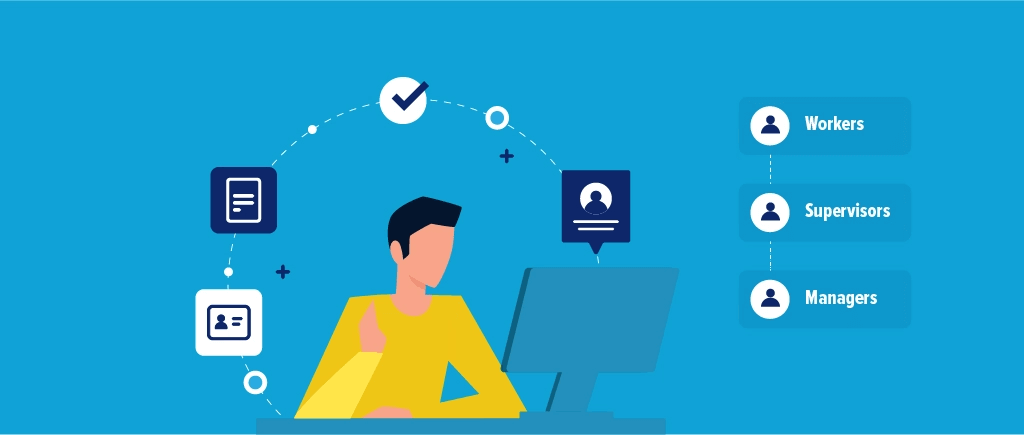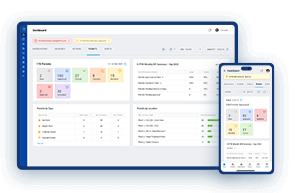
Effective Strategies For Optimizing Permit To work Processes
If you’re responsible for managing permit to work (PTW) processes, you’re likely familiar with the challenges of ensuring compliance and safety while also minimizing downtime and delays. Optimizing your PTW processes and reducing the time required to complete a permit can help you achieve these goals and improve efficiency in the workplace.
In this article, we’ll explore some strategies for streamlining PTW processes and reducing permit completion time, as well as some common challenges businesses face when trying to do so.
Permit to work processes are essential for managing risks and ensuring that work is carried out safely in high-risk industries such as construction, oil and gas, and manufacturing. However, these processes can also be time-consuming and complex, involving multiple stakeholders and approval steps. Delays in completing permits can result in lost productivity, increased costs, and potential safety hazards.
To address these challenges, businesses are increasingly turning to strategies such as digital permit to work systems, streamlined approval processes, and improved communication and collaboration. While these strategies can be effective, they also require careful planning and implementation to avoid common pitfalls and ensure success.
As you consider ways to optimize your PTW processes and reduce permit completion time, keep in mind the unique needs and challenges of your industry and organization. With the right strategies and tools in place, you can improve safety and efficiency in your workplace while also reducing costs and downtime.
Common Bottlenecks in PTW Processes

Despite the importance of PTW processes for ensuring safety in high-risk industries, there are a number of common bottlenecks that can slow down these processes and lead to longer permit completion times. One of the most significant bottlenecks is communication breakdowns between stakeholders, such as workers, supervisors, and safety managers. When communication is poor or unclear, it can lead to delays in obtaining necessary approvals or clarifications, which can in turn impact productivity and safety.
Another common bottleneck is a cumbersome approval process. When there are too many steps or stakeholders involved in approving a permit, it can significantly slow down the process and increase the risk of errors or oversights. This is especially true in industries with complex operations or regulatory requirements, where multiple permits may need to be obtained before work can begin.
These bottlenecks can have serious consequences, both for the safety of workers and for the productivity of the business. Delays in completing permits can lead to lost productivity, increased costs, and potential safety hazards. In some cases, workers may attempt to bypass the PTW process altogether, which can lead to even greater safety risks.
To address these bottlenecks, businesses can take a number of steps to streamline their PTW processes and reduce permit completion time. In the next section, we’ll explore some strategies for doing so, and how they can help improve safety and efficiency in the workplace.
Strategies for Streamlining PTW Processes
Fortunately, there are a number of strategies that businesses can use to optimize their PTW processes and reduce permit completion time. One of the most effective ways to do so is by implementing a permit to work software. Digital systems can help streamline the process by automating certain tasks, such as permit routing and approval, and providing real-time visibility into the status of permits. This can significantly reduce the time required to complete a permit, while also improving accuracy and reducing the risk of errors.
Another strategy for streamlining PTW processes is to reduce unnecessary approval steps. This can be done by reviewing the approval process and identifying any steps that can be eliminated or consolidated. For example, some permits may require approvals from multiple stakeholders even though only one approval is truly necessary. By streamlining the approval process, businesses can significantly reduce the time required to complete a permit.
Improving communication and collaboration is another key strategy for optimizing PTW processes. This can be achieved by providing clear guidelines and expectations for communication, as well as providing training and support for employees. By improving communication and collaboration, businesses can ensure that all stakeholders are on the same page and that there are no misunderstandings or delays in the approval process.
Finally, providing training and support for employees can help ensure that they are equipped with the knowledge and tools they need to complete permits efficiently and accurately. This can include training on the PTW process itself, as well as on any relevant software or tools. By investing in employee training and support, businesses can improve the efficiency of their PTW processes and reduce the risk of errors or delays.
Related read: Our listing of the best Control of Work software.
Read Part 2 of this article: Measuring Success of Your Permit to Work Optimization


Ramesh Nair is the Founder and Principal Partner of Niyati Technologies, the company behind Safetymint.
He’s a dedicated advocate for workplace safety. Ramesh firmly believes that every individual deserves to return home safely after a day’s work. Safetymint, the innovative safety management software, emerged from this conviction. It’s a platform designed to streamline safety management, empower safety professionals, and enhance safety in workplaces.
Through his blog, Ramesh shares insights, best practices, and innovative solutions for workplace safety. Visit his social media profiles to follow him for regular updates.




